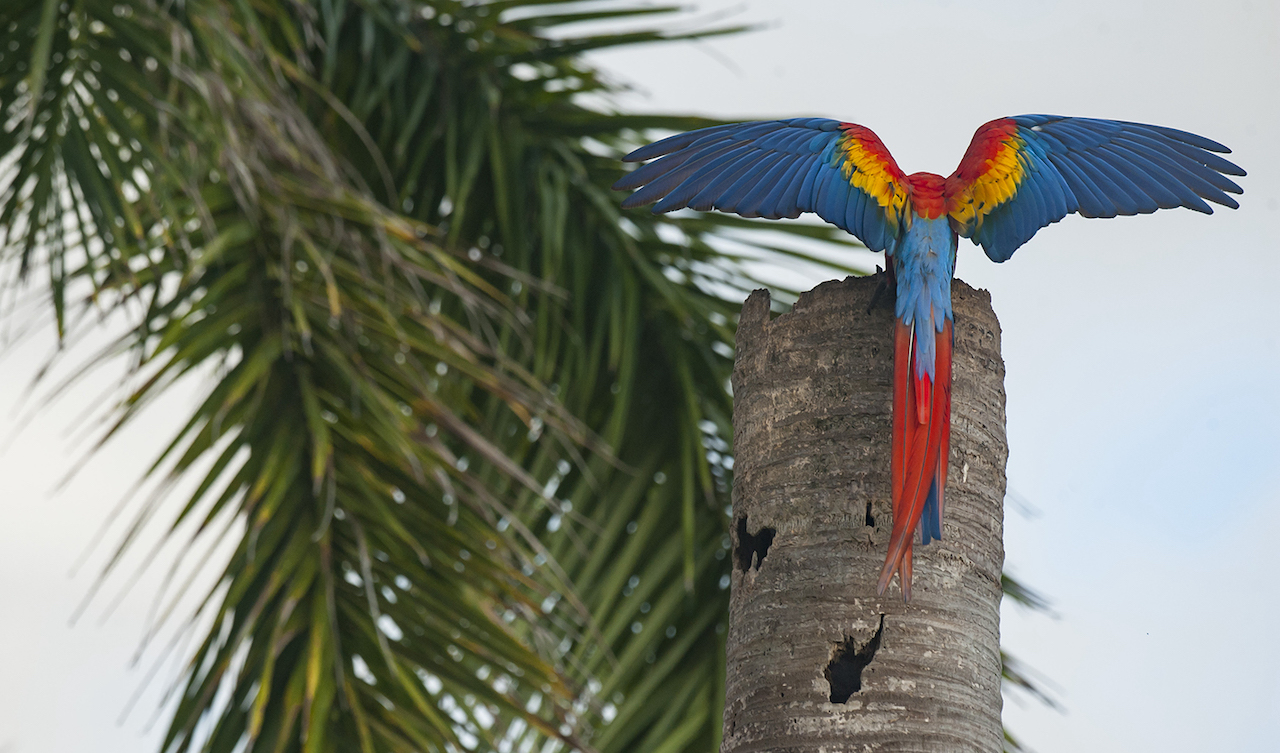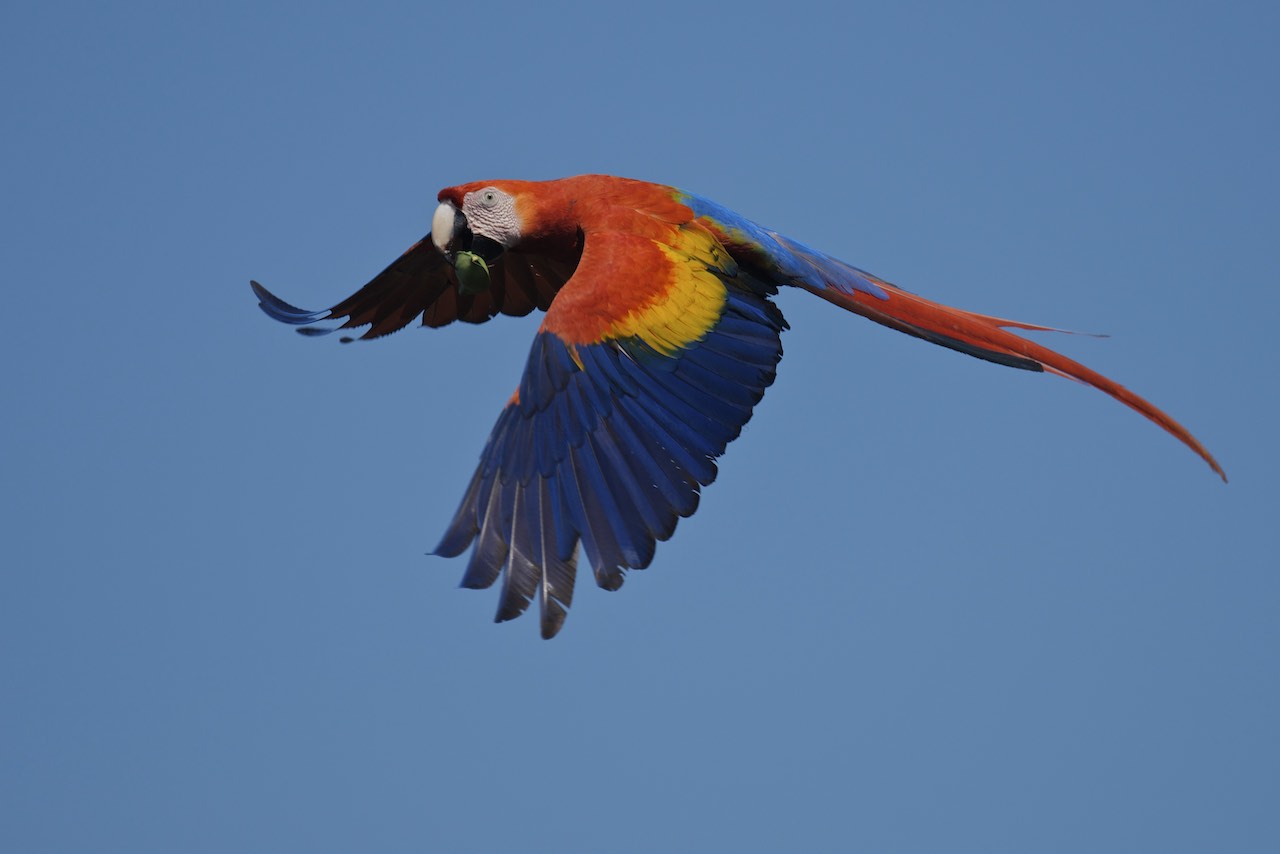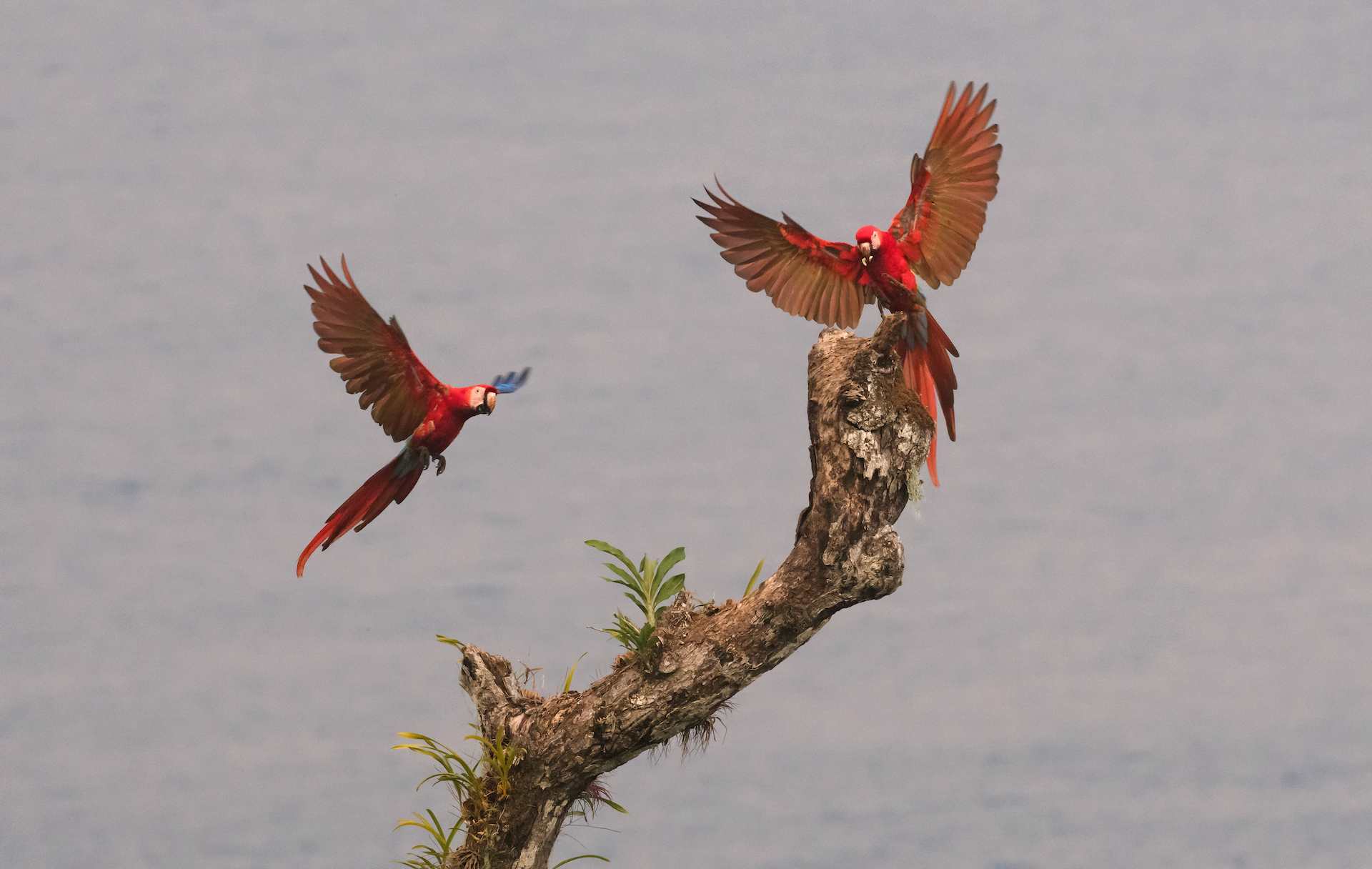How is the life of Scarlet Macaws?

Natural History.
Scarlet macaw belongs to the group of Neotropical parrots. It is one of the most beautiful members of the parrot family. It has white face and brightly-colored, yellow, red, green and blue body. These large parrots can reach 32 inches in length and 2.2 pounds of weight.
They prefer life in the rainforest. Scarlet Macaws are curious, strong willed and highly trainable. It is one of the most intelligent bird species in the world and able to mimic words and sounds and learn tricks in captivity.

Diet
Nuts, leaves, berries and seeds from the rainforest make up the bulk of the scarlet macaw’s diet. Its strong, hooked beak is perfect for breaking nuts and seeds. Interestingly, the scarlet macaw can eat fruits toxic enough to kill other animals. This could be because they also eat large amounts of clay, which is thought to neutralize plant poisons.
Habitat
The scarlet macaw can be found from southern Mexico to Peru, as well as Bolivia, eastern Brazil and the island of Trinidad. They prefer to spend their time in tall, deciduous trees in forests and near rivers, usually in large, noisy groups. Macaws also mate for life, nesting from January through April in the holes of dead canopy trees. Mated adults lay up to two eggs per year, and preen each other and their offspring for hours, cleaning bugs from their feathers.
Reproduction.
Like most parrots, the female Scarlet Macaw lays 2 to 4 white eggs in a tree cavity. The young hatch after 24 to 25 days. They fledge about 105 days later and leave their parents a year later.
Conservation.
Scarlet Macaws are an endangered species due to their capture as pets and loss of habitat.
Before the Scarlet Macaws decline in population, its distribution included much of Costa Rica. However, by the 1960s Scarlet Macaws had been decreasing in numbers due to a combination of factors, particularly hunting, poaching and the destruction of habitat through deforestation. Further, the spraying of pesticides by companies cultivating and selling bananas for export played a significant role in decreasing Scarlet Macaw populations.
As pets, Scarlet Macaws are popular cage birds for those who can pay both the high price of the bird and the price of the big cage required. You should be able to tolerate their loud calls and can give them considerable time outside their cages. They are considered sociable and affectionate and some talk quite well.
Cool facts about it:
- The Scarlet Macaw can out live humans as they are known to live up to 80 years in captivity and 40-50 years in the wild.
- The scientific name of this beautiful bird is Ara Macao.
- This species is native to the humid evergreen forests in Central and South America, including Mexico, Guatemala, Belize, Colombia, Ecuador, Brazil and Amazonian Peru.
- They have extremely powerful beaks with which they can easily crush nuts and seeds to eat. It also uses its beak as a climbing aid.
- They also have flexible feet that are used for manipulation of food, branches and other items used as tools.

Links:
https://easyscienceforkids.com/scarlet-macaw/
